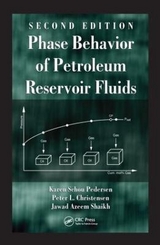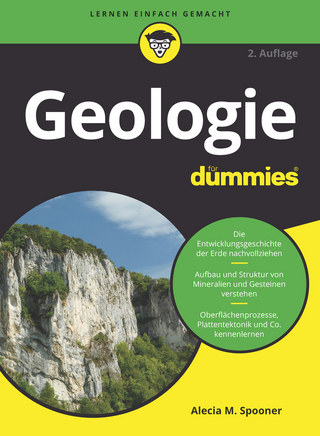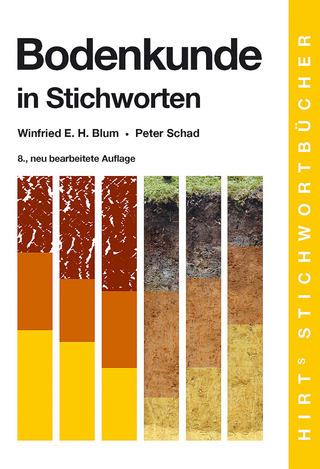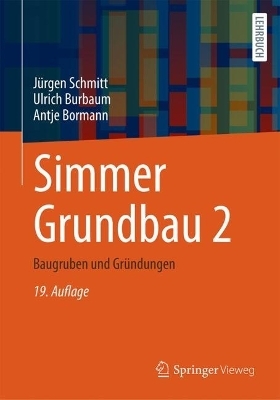
Phase Behavior of Petroleum Reservoir Fluids
Marcel Dekker Inc (Verlag)
978-0-8247-0694-4 (ISBN)
- Titel erscheint in neuer Auflage
- Artikel merken
Understanding the phase behavior of the various fluids present in a petroleum reservoir is essential for achieving optimal design and cost-effective operations in a petroleum processing plant. Taking advantage of the authors’ experience in petroleum processing under challenging conditions, Phase Behavior of Petroleum Reservoir Fluids introduces industry-standard methods for modeling the phase behavior of petroleum reservoir fluids at various stages in the process. Keeping mathematics to a minimum, the book discusses sampling, characterization, compositional analyses, and equations of state used to simulate various pressure–volume–temperature (PVT) properties of reservoir fluids. The coverage of phase behavior at reservoir conditions includes simulating minimum miscibility pressures and compositional variations depending on depth and temperature gradients. Developed in conjunction with several oil companies using experimental data for real reservoir fluids, the authors present new models for the characterization of heavy undefined hydrocarbons, transport properties, and solids precipitation.
An up-to-date overview of recently developed methods for modern petroleum processing, Phase Behavior of Petroleum Reservoir Fluids presents a streamlined approach for more accurate analyses and better predictions of fluid behavior under variable reservoir conditions.
PETROLEUM RESERVOIR FLUIDS
Reservoir Fluid Constituents
Properties of Reservoir Fluid Constituents
Phase Envelopes
Classification of Petroleum Reservoir Fluids
COMPOSITIONAL ANALYSES
Analyzing a Bottom Hole Sample by Gas Chromatography (GC)
Reservoir Fluid Composition from Separator Samples
Mud-Contaminated Samples
Quality Control of Reservoir Fluid Samples
PVT EXPERIMENTS
Constant-Mass Expansion Experiment
Constant-Volume Depletion Experiment
Differential Liberation Experiment
Separator Test
Swelling Test
Viscosity Experiment
Slim Tube Experiment
Multiple-Contact Experiment
CUBIC EQUATIONS OF STATE
The van der Waals Equation
Redlich–Kwong Equation
The Soave–Redlich–Kwong (SRK) Equation
Peng–Robinson (PR) Equation
Peneloux Volume Correction
Other Cubic Equations of State
Equilibrium Calculations
Nonclassical Mixing Rules
Other Equations of State
C7++ CHARACTERIZATION
Classes of Components
Binary Interaction Coefficients
Lumping
Delumping
Mixing of Multiple Fluids
Characterizing of Multiple Compositions to the Same Pseudocomponents
Heavy Oil Compositions
FLASH AND PHASE ENVELOPE CALCULATIONS
Pure Component Vapor Pressures from Cubic Equations of State
Mixture Saturation Points from Cubic Equations of State
Flash Calculations
Phase Envelope Calculations
Phase Identification
PVT SIMULATION
Constant Mass Expansion (CME)
Constant Volume Depletion (CVD)
Differential Liberation
Separator Test
Swelling Test
What to Expect from a PVT Simulation
PHYSICAL PROPERTIES
Density
Enthalpy
Internal Energy
Entropy
Heat Capacity
Joule–Thomson Coefficient
Velocity of Sound
Example Calculations
REGRESSION TO EXPERIMENTAL PVT DATA
Shortcomings of Parameter Regression
Analyzing for Errors in Compositional Data
Tc, Pc, and w of C7+ Fractions
Regressing on Coefficients in Property Correlations
Object Functions and Weight Factors
Example of Regression for Gas Condensate
Tuning on Single Pseudocomponent Properties
Near-Critical Fluids
Fluids Characterized to the Same Pseudocomponents
TRANSPORT PROPERTIES
Viscosity
Thermal Conductivity
Gas/Oil Surface Tension
Diffusion Coefficients
WAX FORMATION
Experimental Studies of Wax Precipitation
Thermodynamic Description of Melting of a Pure Component
Modeling of Wax Precipitation
Wax PT Flash Calculations
Viscosity of Oil–Wax Suspensions
Wax Inhibitors
ASPHALTENES
Experimental Techniques for Studying Asphaltene Precipitation
Asphaltene Models
GAS HYDRATES
Types of Hydrates
Modeling of Hydrate Formation
Hydrate Inhibitors
Hydrate Simulation Results
Hydrate P/T Flash Calculations
COMPOSITIONAL VARIATIONS WITH DEPTH
Theory of Isothermal Reservoir
Theory of Nonisothermal Reservoir
MINIMUM MISCIBILITY PRESSURE
Three-Component Mixtures
MMP of Multicomponent Mixtures
FORMATION WATER AND HYDRATE INHIBITORS
Hydrocarbon–Water Phase Equilibrium Models
Experimental Hydrocarbon–Water Phase Equilibrium Data
Water Properties
Phase Envelopes of Hydrocarbon–Aqueous Mixtures
SCALE PRECIPITATION
Criteria for Salt Precipitation
Equilibrium Constants
Activity Coefficients
Solution Procedure
Example Calculations
Appendix A
Index
*Each chapter contains a References section for further information
| Erscheint lt. Verlag | 1.11.2006 |
|---|---|
| Zusatzinfo | 2 Halftones, black and white; 206 Tables, black and white; 209 Illustrations, black and white |
| Verlagsort | New York |
| Sprache | englisch |
| Maße | 174 x 246 mm |
| Gewicht | 953 g |
| Themenwelt | Naturwissenschaften ► Geowissenschaften ► Geologie |
| ISBN-10 | 0-8247-0694-3 / 0824706943 |
| ISBN-13 | 978-0-8247-0694-4 / 9780824706944 |
| Zustand | Neuware |
| Informationen gemäß Produktsicherheitsverordnung (GPSR) | |
| Haben Sie eine Frage zum Produkt? |
aus dem Bereich



